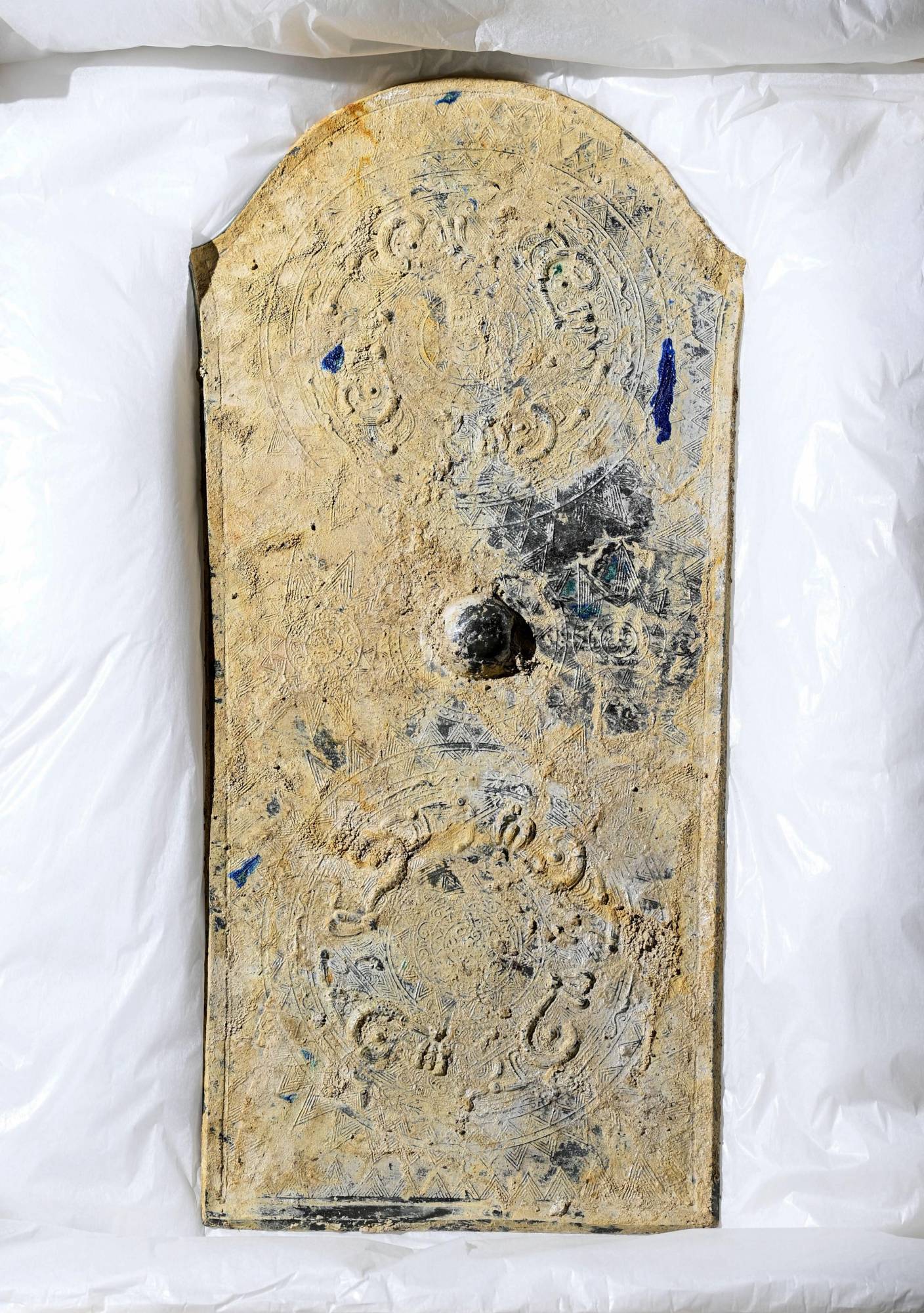Japan's largest circular mound hid the longest sword and mirror
Categories: Nálezy v Asii a Oceánii
In the Tomio Maruyama burial mound from the second half of the 4th century. The largest iron sword ever found and the largest bronze mirror were discovered - objects unparalleled in the Japanese archaeological record. Archaeologists speak of finds of national significance.
The sword is 2.37 metres long and 6 centimetres wide, and its shape is serpentine. It has been bent in six places to create the characteristic wave effect. The extraordinary size and shape are evidence of advanced ironworking techniques from the Kofun period (c. 300-710 AD). Traces of organic remains have been found on the head, hilt and scabbard. The sword is twice as long as the longest sword to date from a late 5th century burial mound in Hiroshima. It is also the longest iron sword ever found in East Asia. Only 85 serpentine swords have been discovered in Japan so far, and this is the oldest.
The bronze mirror is in the shape of a shield, and no one has ever found such a mirror from the Kofun period. It is also very oversized - 64 cm long and 31 cm wide. Its decoration is also unique. The back of the mirror is decorated with engravings of stylised dragons and geometric patterns. The mirror's reflective surface is still smooth and shiny.
The mirror and shields are considered to be tools to protect the dead from evil spirits. Experts believe that the sword was purposely made twice its size to multiply its power. The possibility of using the sword as a combat tool is slim, according to archaeologists, and therefore it was almost certainly made for ritual purposes.
"These discoveries suggest that the technologies of the Kofun period are beyond our imagination. They are masterpieces," said Kosaku Okabayashi, deputy director of the Archaeological Institute of Nara Prefecture, Kashihara. "The length of the sword was so astonishing that at first we thought it was several swords. Finding something like this has always been a dream of mine. Who knew it would be something so incredible," said thirty-two-year-old Riku Murase, a team member and artifact finder.
At 109 metres in diameter, Tomio Maruyama is the largest circular burial mound in Japan. It probably belonged to one of the rich and powerful individuals supporting the ruler Yamato. It was looted during the Meiji period (1868-1912) and lost its top and some artifacts. City archaeologists have been studying the mound since 2018. They first mapped it using airborne laser scans, followed by excavations.
Last fall marked the fifth season of excavations, focusing on Tsukuridashi, a square outcropping on the northeast side of the mound. Here, archaeologists found a burial pit that had been excavated into the gravel layer before the completion of the mound. The pit contained a five-metre-long wooden koyamaki coffin. According to Naohiro Toyoshima, professor of archaeology at Nara University, the burial chamber apparently belonged to someone close to the owner of the mound.
Video
Roman Nemec
Sources: kyodonews.net, japantimes.co.jp, emuseum.nich.go.jp

A team from Nara Prefecture examines the iron dakō sword found in the burial mound of Tomio Maruyama

Shield-shaped mirror

X-ray image of the mirror

Tomio Maruyama burial mound

Tomio Maruyama burial mound excavation

Iron sword in situ

X-ray of the sword
The article is included in categories: